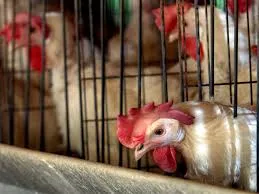cages for layers chickens
Oct . 05, 2024 17:28 Back to list
cages for layers chickens
Cages for Layer Chickens An Overview of Benefits, Challenges, and Alternatives
The poultry industry plays a crucial role in global food production, particularly in providing eggs. Layer chickens, specifically bred for egg production, make up a significant portion of this sector. With the growing demand for eggs, the debate around the best methods of housing layer chickens has garnered considerable attention. Cages for layer chickens have been a predominant method for several decades; however, this practice is increasingly being scrutinized for its impact on animal welfare, egg production efficiency, and the broader environmental implications.
Understanding Layer Chicken Cages
Layer chickens are often housed in cages designed to optimize space and ensure high production rates. Traditional cage systems, known as battery cages, typically house multiple birds in a confined space, allowing farmers to manage populations effectively. These cages are equipped with various features, such as feed troughs and water supplies, considering the birds' basic needs. The main advantage of this housing system lies in its efficiency it maximizes production and minimizes labor costs, translating into lower prices for consumers.
The Benefits of Caged Systems
1. Efficient Resource Use Caged systems allow for the efficient allocation of resources. With birds housed closely together, it is easier for farmers to monitor their health and manage feeding. This direct oversight can lead to better egg production rates and quality control.
2. Reduced Labor Costs Managing a flock in cages often requires less labor compared to free-range or barn systems. The cages can be designed for automatic feeding and cleaning, reducing the need for manual intervention.
3. Disease Management Caged environments can reduce the spread of diseases among birds. In more extensive systems, such as free-range models, birds have more contact with the environment and potentially harmful pathogens, which can result in higher mortality rates and lower egg production.
Challenges and Controversies
cages for layers chickens

Despite the advantages, caged systems face significant criticism, particularly regarding animal welfare. Critics argue that traditional battery cages severely restrict the natural behaviors of layer hens, such as nesting, foraging, and dust bathing. The limitations imposed by confined spaces can lead to stress and health problems in the birds.
In recent years, various animal rights organizations and consumer advocacy groups have pushed for more humane alternatives. These efforts have sparked a movement toward enriched cages, providing hens with slightly more space and additions like perches and nesting areas to promote natural behaviors.
Alternatives to Caged Systems
As consumer awareness grows, alternative farming practices are being explored and implemented. Free-range systems allow hens to roam outside and engage in natural behaviors, though this method can be more resource-intensive and lead to challenges with predator management and disease control.
Another promising alternative is the use of aviary systems, which provide vertical space for hens to move around and exhibit more natural behaviors within a barn-like setting. These arrangements may offer a compromise between traditional caging and free-range systems, aiming to improve animal welfare while still maintaining production efficiency.
The Future of Layer Chicken Housing
The future of layer chicken housing will likely see a blend of traditional practices and innovative alternatives. Regulatory changes in various regions are pushing for better welfare standards, which may include phasing out battery cages altogether. As more consumers opt for cage-free products, producers may need to adapt to meet market demands while balancing productivity with ethical considerations.
Conclusion
The debate surrounding cages for layer chickens encapsulates wider conversations about food production, animal welfare, and sustainability. While caged systems have historically dominated the industry due to their efficiency and cost-effectiveness, the evolving landscape of consumer preferences and ethical considerations suggests a future where layer chickens may be raised in more humane and sustainable conditions. As producers grapple with these changes, the industry stands at a crossroads, tasked with finding the best paths to ensure not only high-quality egg production but also the welfare of the animals involved.
-
Hot Sale 24 & 18 Door Rabbit Cages - Premium Breeding Solutions
NewsJul.25,2025
-
Automatic Feeding Line System Pan Feeder Nipple Drinker - Anping County Yize Metal Products Co., Ltd.
NewsJul.21,2025
-
Automatic Feeding Line System Pan Feeder Nipple Drinker - Anping County Yize Metal Products Co., Ltd.
NewsJul.21,2025
-
Automatic Feeding Line System - Anping Yize | Precision & Nipple
NewsJul.21,2025
-
Automatic Feeding Line System - Anping Yize | Precision & Nipple
NewsJul.21,2025
-
Automatic Feeding Line System-Anping County Yize Metal Products Co., Ltd.|Efficient Feed Distribution&Customized Animal Farming Solutions
NewsJul.21,2025






